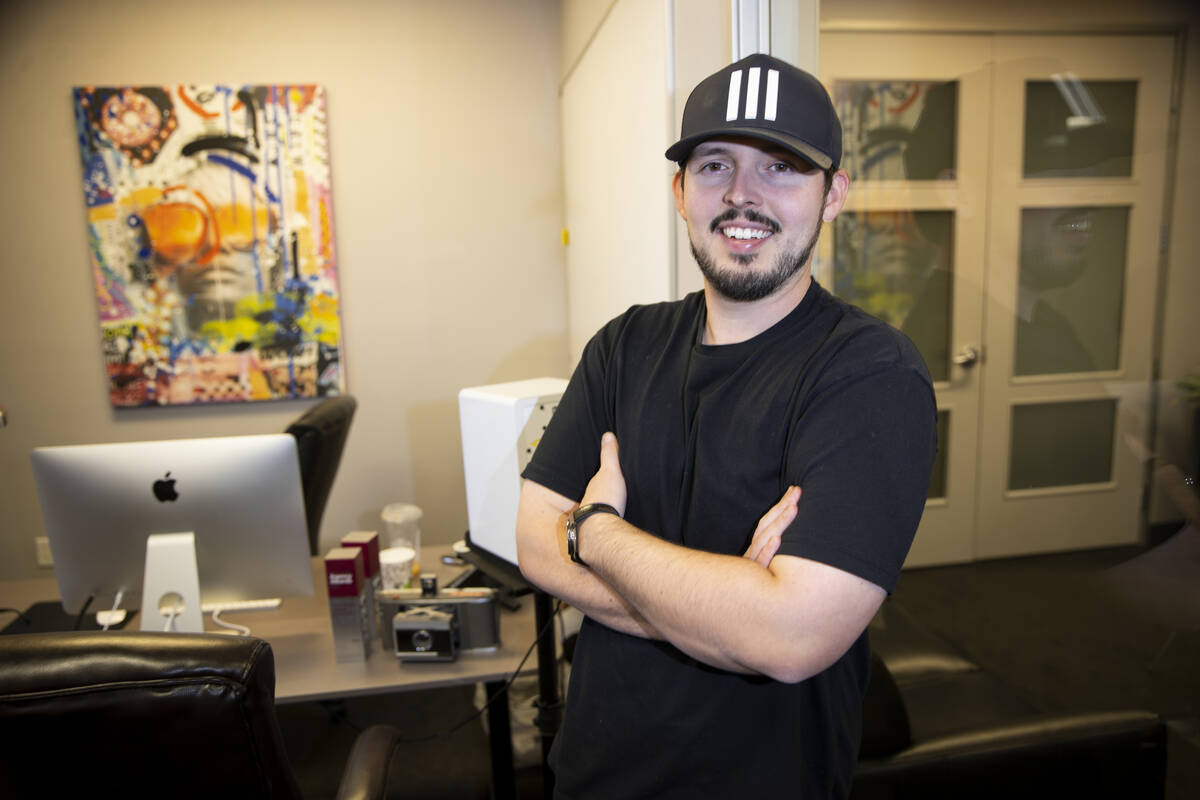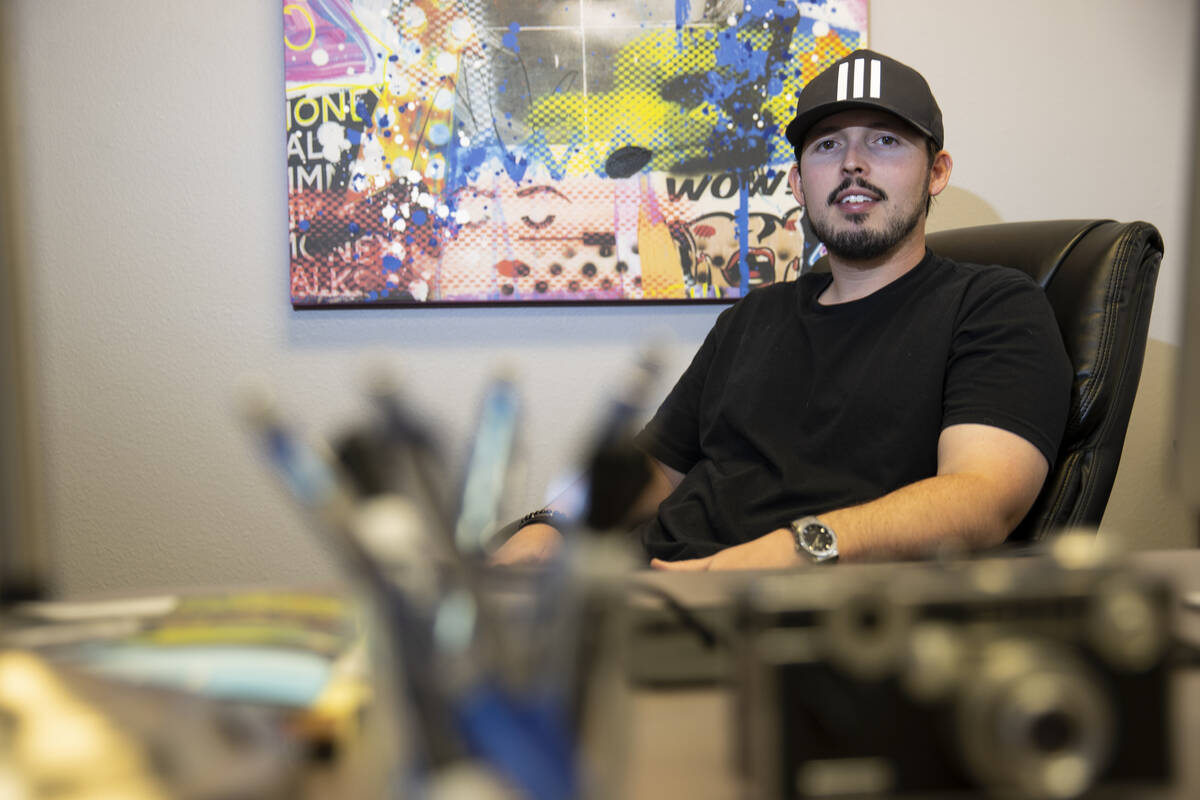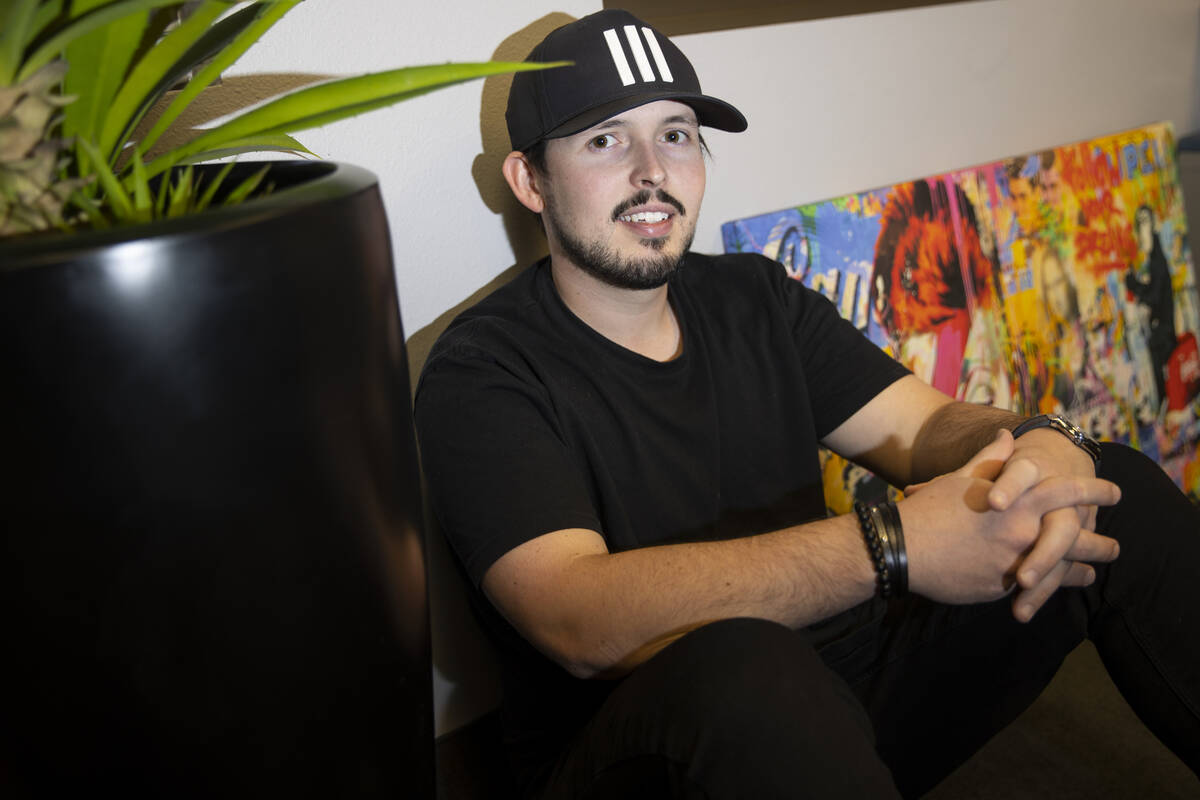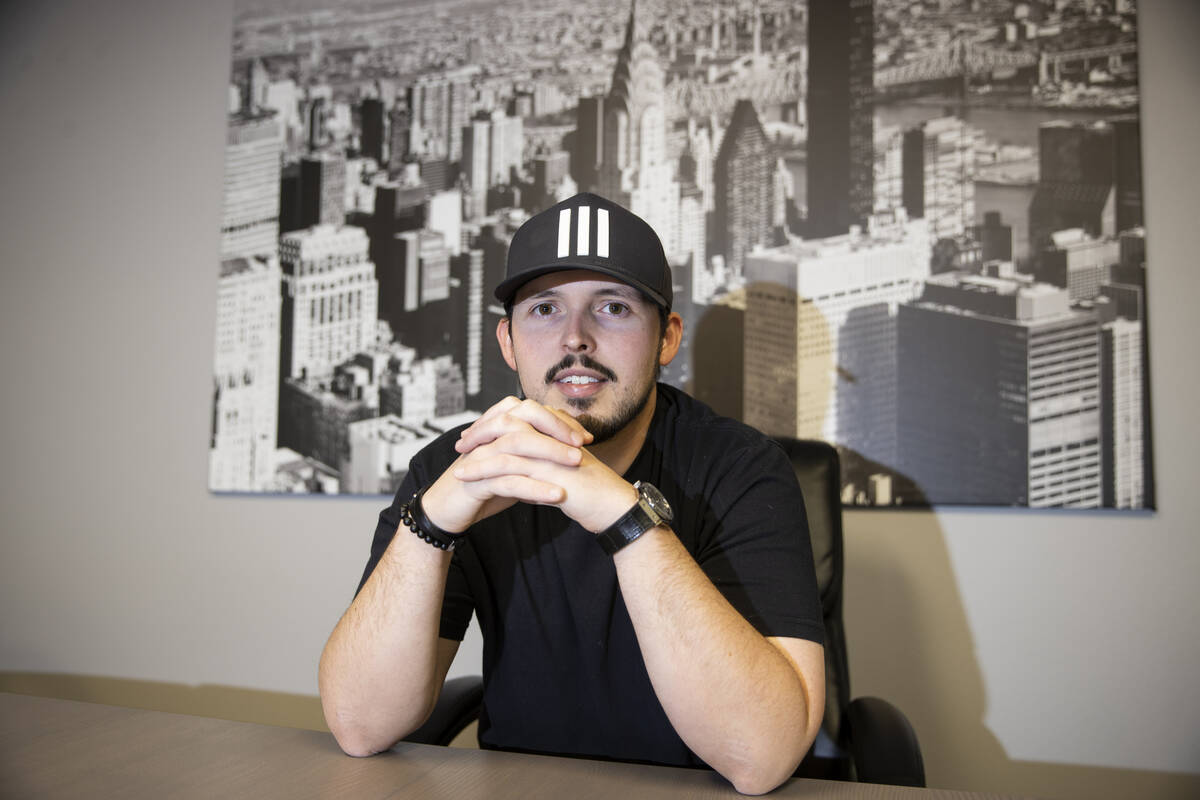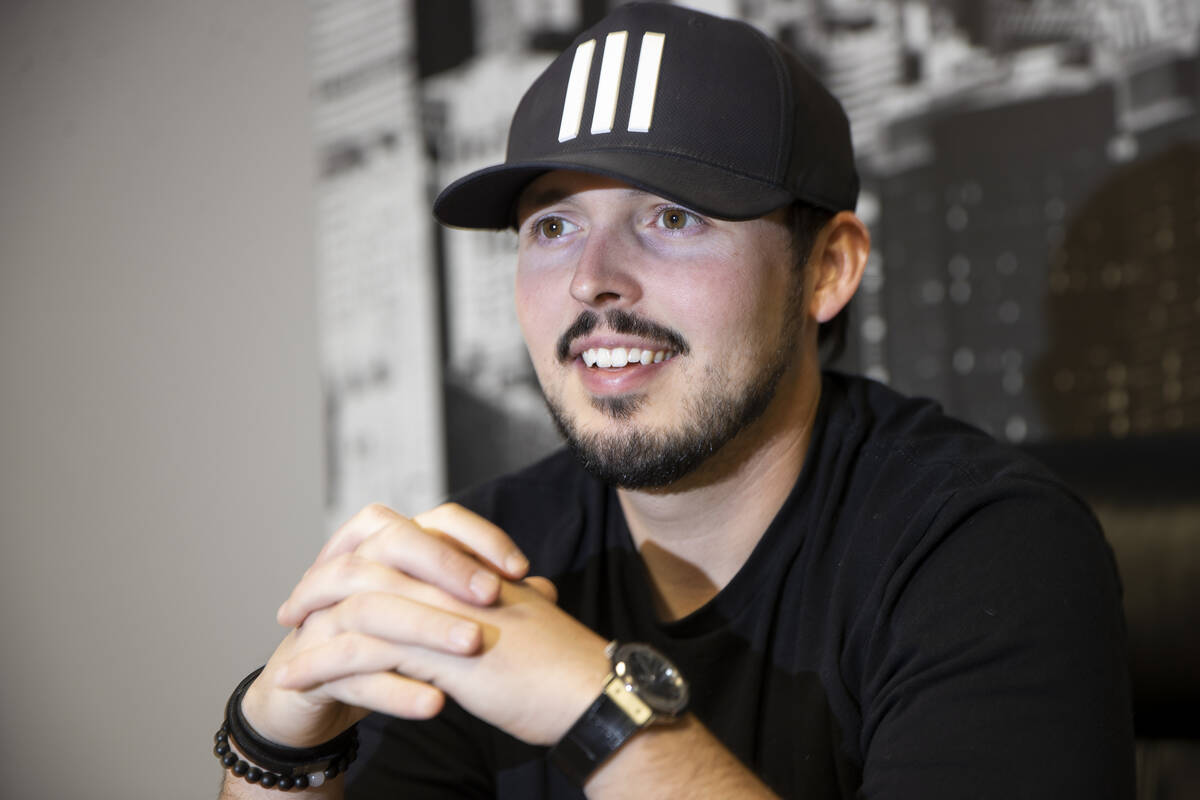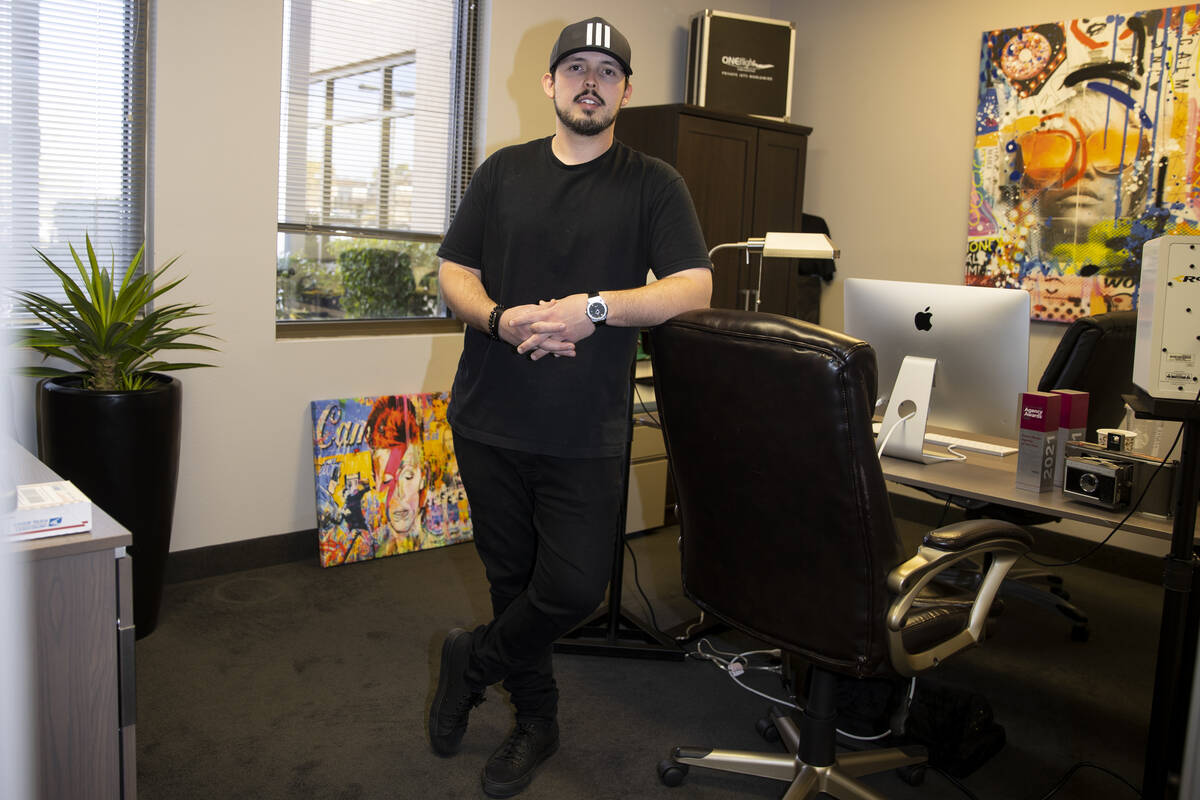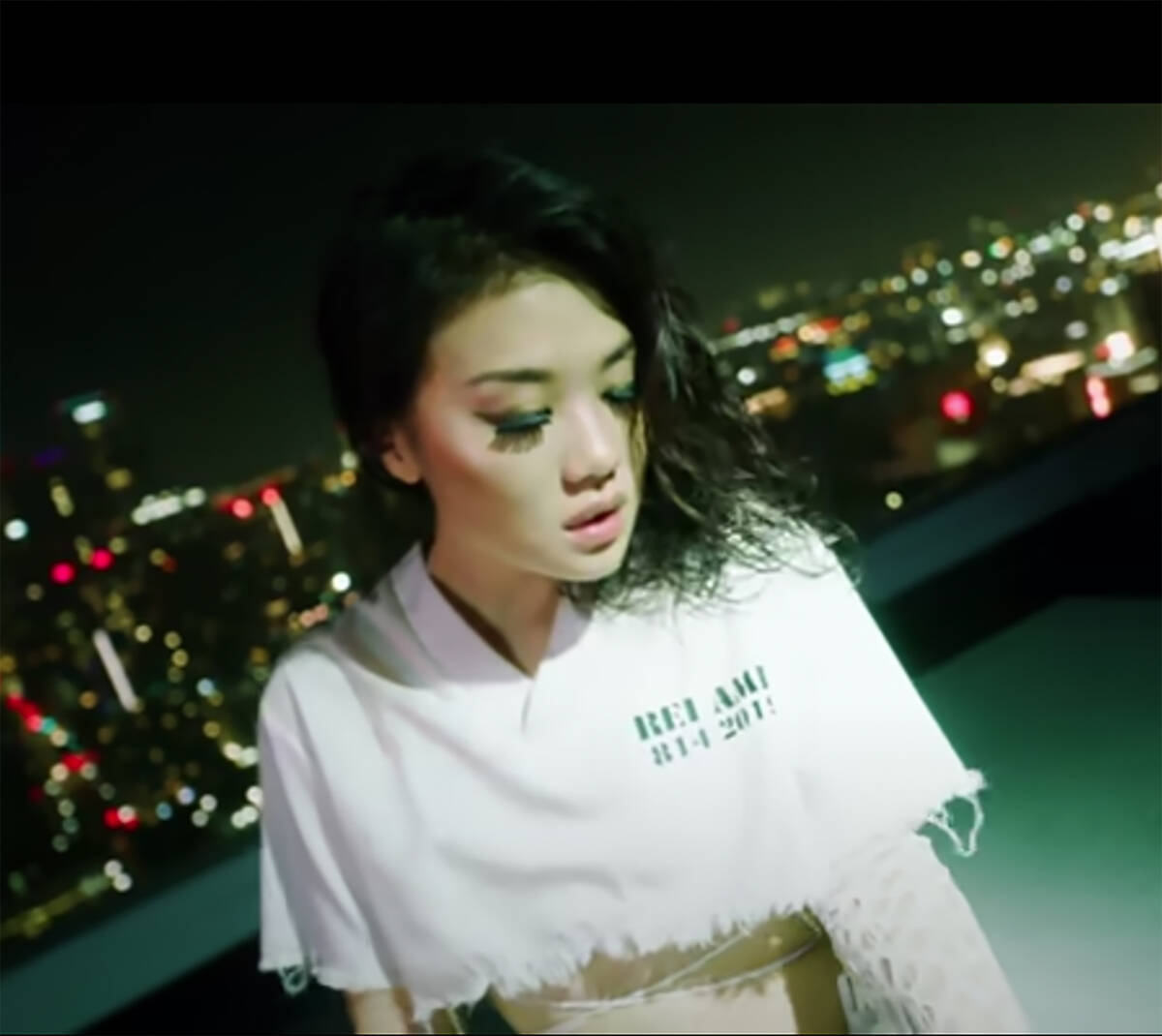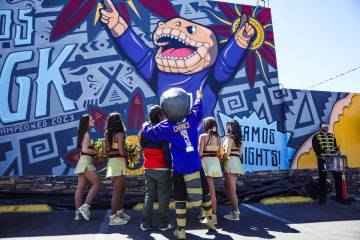How a Las Vegan helps stars like Justin Bieber go viral on TikTok
It all began with a song about shoving small children.
Three years ago, Griffin Haddrill, then primarily a manager for DJs, got a call from a fellow manager friend asking him for help marketing a new artist, sharp-tongued singer Rei Ami, whom he described as an R-rated Billie Eilish.
Haddrill had been delving into a social media app called Music.ly, which would later change its name to TikTok. His friend asked him to help develop a promotional campaign for Ami and her song “Trippin’ Toddlers,” a cheekily profane ditty about pushing kids and then doing, uh, “stuff” with their fathers.
With a minuscule budget of a few thousand dollars, Haddrill and his buddy and business partner Sean Young began direct-messaging hundreds of influencers on Music.ly to see if they would create videos soundtracked by “Trippin’ Toddlers” for a small fee.
“We must have DM’d over 500, 600 influencers,” Haddrill recalls. “We ended up getting maybe 100 videos made with the song, and the song ended up going viral. Within a week, maybe two weeks 300,000 videos.
“My manager friend’s calling me going, ‘Dude, we’re getting offers from every record label; Billie Eilish’s label wants to sign her. This is madness. This is crazy,’ ” he continues. “And I was like, ‘OK, the power of this thing is unreal. I need to be super serious about this.’ ”
With that, Haddrill and Young founded VRTCL, a Las Vegas-based company that has become an industry leader in the burgeoning industry of generating TikTok virality for artists and record labels.
They’ve helped a galaxy of stars ranging from Saweetie to Justin Bieber, the Bee Gees to Lil Nas X get their songs on tens of millions of TikTok clips.
VRTCL now has 18 employees, earns $1 million a month in revenues and was purchased in January for an undisclosed amount by music and tech company Create Music Group, with Haddrill, 24, staying on as CEO and Young as head of content.
Having a viral song on TikTok can pay dividends on more than just said platform: It can also significantly boost an artist’s streaming and sales numbers.
Haddrill has worked on numerous songs, like Glass Animals’ “Heatwave,” that went viral on TikTok before hitting the top of the charts.
“We’ve had moments where daily streams went from 10,000 a day to 300,000 a day, 500,000 a day, a million a day,” Haddrill says from a conference room in VRTCL’s west-side offices, sporting a ubiquitous black baseball hat. “That’s when you realize, ‘Holy (expletive), the power of this platform.’ ”
How it works
The 15-second- to one-minute-long videos — over 7 million of them — depict everything from how-to guides on creating designer press-on nails for your dog to a woman riding a child’s unicorn toy to her friend’s house while clutching a 12-pack of Miller Lite to endless versions of a fist-punching hip-hop dance routine.
They’re all set to the tune of rapper Saweetie’s “Best Friends,” which became a TikTok sensation in 2020 thanks in large part to VRTCL.
It was one of their first breakout hits, VRTCL’s lawyer putting them in touch with Saweetie’s manager to make the initial connection.
From there, Haddril sought choreographers to create a dance routine for the song, sourcing dozens before finding the right one.
“And then we put all our eggs behind that basket, really doubled down on that and pushed the dance out in a super tight period of time,” he explains. “I’m talking about 10 days — just boom! — like 40 influencers all pushing that dance.”
It worked: “Best Friends” became a TikTok sensation and went double platinum.
How does Haddrill do it?
The process begins with him listening to a song five to 1o times to figure out if it’ll be a fit for TikTok — and, if so, what portion of the tune would be best utilized.
The criterion: “We think this can be a trend. These timestamps are perfect for the platform. We can do something really funny or serious or emotional,” Haddrill explains. “And then we typically ideate the trend, ideate whether it’s going to be a dance, whether it’s going to be a makeup transition trend, whether it’s going to be a POV or a couples trend.”
The other part of the job is cultivating a broad array of TikTok influencers to find the best fit for a given song.
“We always put in a lot of time finding new creators and reaching out,” Haddrill says. “We dove into every crevice of TikTok to find new creators — find creators in Korea, Belgium, Argentina, Russian dance creators, Russian e-girl creators, Israeli makeup creators. We get really specific and really targeted.”
Of course, numerous social media platforms have incorporated music, dating back to the days when MySpace was popular.
The difference with TikTok is that it was designed with music in mind.
“TikTok was the first integration of music and social that happened from the very start,” Haddrill says. “Facebook, Instagram, all of them were social first, then integrated music after.
“Some people have an adverse reaction. Some artists are like, ‘Man, another social platform I’ve got participate in?’ ” he adds, “because they’ve been in the traditional route so long. But then the new generation of artists see this as an opportunity: every video, every song that they post is a dart throw to virality, a dart throw to success.
(Haddrill was in college long enough, though, to befriend an engineering student he’d later recruit to create the software that VRTCL uses to track how artists are doing on TikTok.)
Simultaneously, Young became an influencer on Vine and hipped Haddrill to Music.ly.
After his success with “Trippin’ Toddlers,” Haddrill was hooked.
“That was my awakening,” he says. “Hey, this is a vehicle, this is a megaphone to independent and major label artists to market their music in a massive way. … Ever since then, I’ve been all-in.”
A music industry game changer?
He takes out his cellphone and pulls up a TikTok video, eyes flashing in unison with the images on the small screen.
“I never worked with this guy,” Haddrill says, “but I always use him as an example, because I think he’s so pure in his content.”
The artist in question: rapper Johnny 2 Phones.
In the clip, the indie hip-hopper is playing a song for his dad for the first time. “It’s bangin,’ kid,” his father comments with pride.
“His dad is just listening with this pureness,” Haddrill notes. “You get this little peek inside this kid’s life and you’re rooting for him. He’s the underdog. You just want him to succeed.
“If you’re an artist,” he continues, “would you rather spend $20,000 on a radio campaign — on radio, a very small percentage of everyone who listens to you is going to go and interact on your social media; they’re just passive listeners — or would you rather spend your time making a video like this?”
It’s moments like these that Haddrill looks to curate, to elevate artists within the music industry while tweaking its traditional business model.
One of TikTok’s greatest powers is its ability to decentralize the music industry for artists — freeing them from relying exclusively on a record label to reach listeners — and audiences, by providing an avenue for listeners to find and support acts on a grassroots level. This gives fans a direct stake in an artist’s success, which can result in a more enduring bond.
Haddrill doesn’t want to apply these principles just to new artists either: He’s bullish about working with heritage acts, like Creedence Clearwater Revival, one of his favorite bands, and Cher, whom he’s seen live seven times.
What unifies both up-and-coming and established acts in Haddrill’s mind? The thrill of a new fan discovering either.
“There’s nothing better than when you find a song that almost feels like no one else knows or an artist that no one else knows and you just love it. It just speaks to your soul,” he says. “And then you share that with other people — you’re like the biggest salesperson for that song now, because you’re sharing it with this passion, this intensity.
“That’s exactly what TikTok’s doing. The power of discovery is the most powerful marketing tool in the world.”
Contact Jason Bracelin at jbracelin@reviewjournal.com or 702-383-0476. Follow @jbracelin76 on Instagram.



